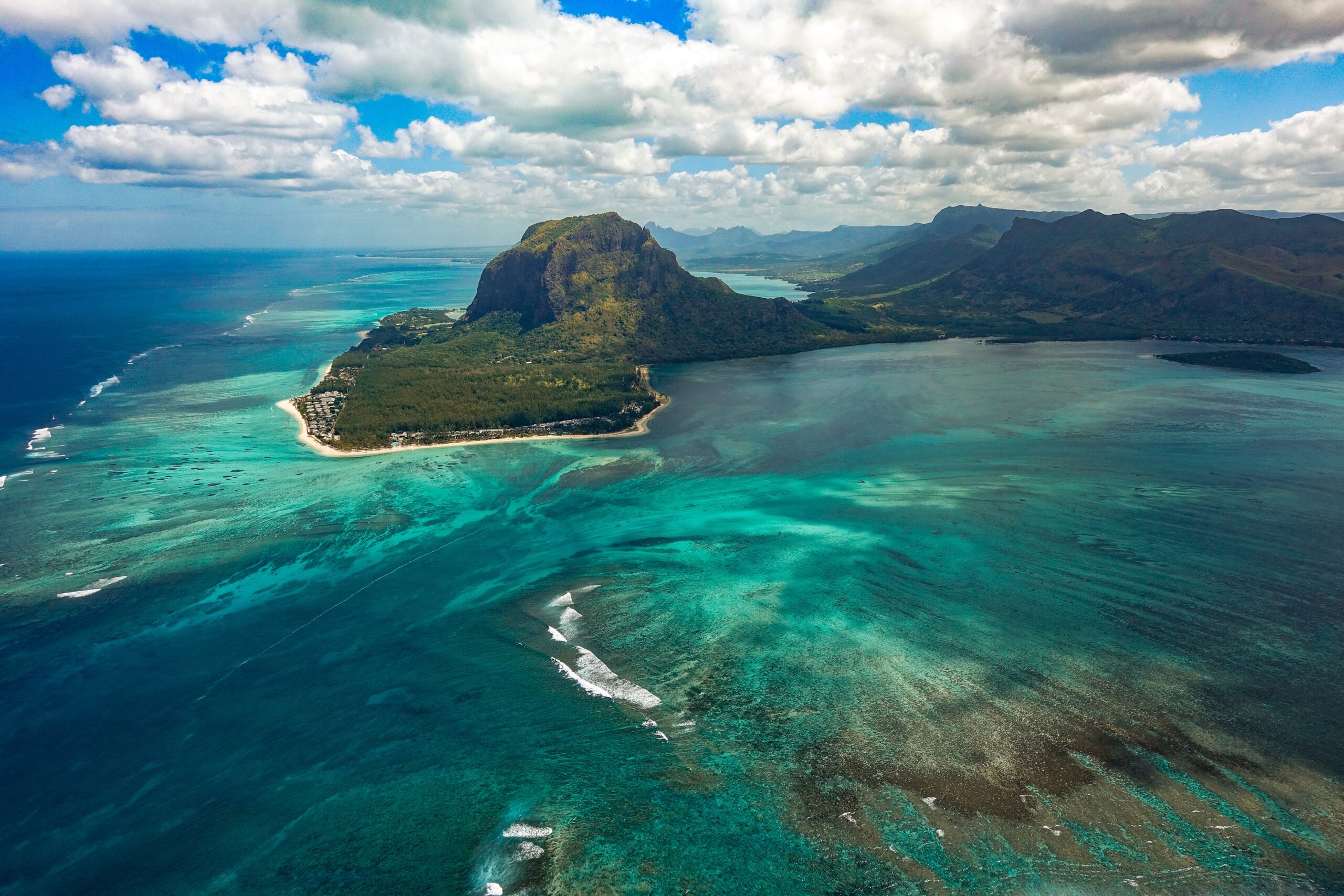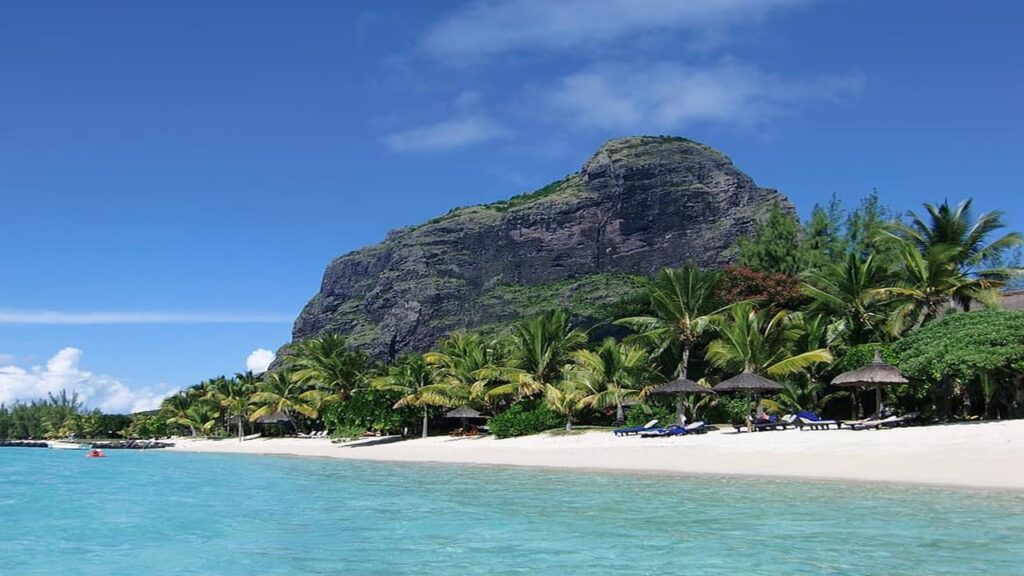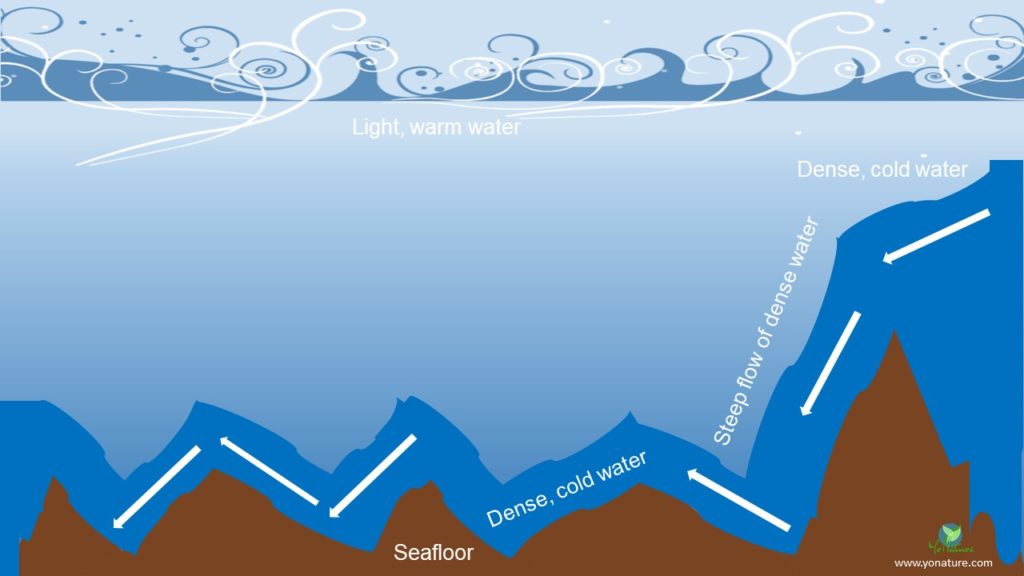Underwater waterfall of Mauritius Explained

The underwater waterfall of Mauritius is a wonderful natural illusion. It is located in the south-west of the island off the coast of Le Morne village. Le Morne beach is, in fact, one of the most beautiful beaches of Mauritius and thus attracts locals and tourists alike all year long. It is also a well-known spot for kite surfing and deep-sea fishing. What’s more, the main mountain in the region, Le Morne Brabant Mountain, is a UNESCO World Heritage Site. It represents a testimony to maroonage as Mauritius was an important stopover in the eastern slave trade back in the 1800s.

The underwater waterfall is not a real waterfall
The underwater waterfall just adds to the beauty of Le Morne village. However, this phenomenon is visible only from above. As a result, many people have missed out on the sight when trying to catch a glimpse from the beach or on boats. It can be seen atop Le Morne Mountain, on helicopters or by drones. It is important to realise that it is only an optical illusion and not a real underwater waterfall as the Denmark Strait. The underwater waterfall of Mauritius is not a dangerous place; all sorts of marine activities take place right there. Some tour operators even propose visits to underwater caves in that region.
How can a waterfall be underwater?
The term itself means water-fall, as in water falling from an upper region to a lower one. In this way, a water gradient forms. Is it possible for water to fall underwater when the underwater is already water? Tricky, but yes, very possible.
Now, what exactly is a waterfall? Put simply, a waterfall is water falling from high grounds to low grounds, hence waterfall.
Ocean layers
The ocean is made up of two different layers of water: warm, light water and cold, dense water. Water in the upper surfaces of the ocean evaporates quickly. So, it becomes lighter as its density lowers. Basically, light does not go beyond 1000 metres in the sea. Thus, water in those layers is cold, heavy and tends to sink to the bottom. The thermocline, a region of transition from surface to deep water, separates these two water bodies. Ocean currents ensure circulation within these two water bodies.
Principle of an underwater waterfall
As surface water heats up, it becomes lighter and evaporates. At the same time, tides and waves blend the upper surface water with the lower-lying water. But because the bottom water is cold and heavy, it quickly sinks back as soon as it moves upwards. When this heavy load of water bumps into a hard body like an elevated seafloor it follows the object’s course. The density of this water prevents it from mixing with the warm layers.
Using this principle, an underwater waterfall can indeed form. Dense water from atop an oceanic cliff can fall down following the pathway of the so-named feature. It occurs mostly in areas where huge amounts of fresh water, such as snow, melts and dives into the sea.

The principle behind the underwater waterfall of Mauritius
Mauritius island was formed by a shield volcano 10 million years ago. Scientifically, it is important to understand Mauritius’ geology to grasp the concept of this waterfall. In the west, north-west and south-west parts of Mauritius, a rift zone extends from the tip of Le Morne up to Grand Baie [1]. A rift zone is a series of cracks along the volcanic flanks through which magma emerge.
Cracks in the volcanic shield of Mauritius
The zone where water appears to be cascading into a crevice at Le Morne is actually a fault in the volcanic shield of Mauritius. Some 18,000 years ago, sea levels were lower than what they are now. Sediment analysis in the south-west region reveals that the current lagoon was once exposed. It is on this mud bed that a system of coral reef, stretching over a distance of 5 km, emerged [1]. Beyond the reef, the slopes of the volcano descend into deep waters. Active weathering and rockfall over the years soften the ground. Similarly, the recurrent movement of water helps in deepening the crack.
Water currents cause the optical illusion of a waterfall
Just like the seabed is covered with sand and sediment, the regions around the crack are also covered with the same materials. Water currents constantly move from the ocean towards the coast and vice versa thus causing sand to slip into the crack. It is this downward slip of sand into the void that causes an optical illusion of a waterfall.
In fact, no water is actually falling in this scenario. Since the crack is underwater, it is already filled with water to the same surface level as the sea around it.
Photos of the underwater waterfall of Mauritius edited
On a more realistic point, the optical illusion of the waterfall is not like falling off the flat surface at the end of the world. Most of the photos are tricked for a more dramatic effect. The actual optical illusion indeed exists but can mostly be discerned from above by the colour change in the area from green to blue. This colour change indicates a drop in the seafloor. Thereon, the descent of sand in that particular spot creates the underwater waterfall illusion.
Do underwater waterfalls really exist?
Emphatically yes. In many regions around the world such as the Bahamas, divers have reported the phenomenon. Strangely, the largest waterfall in the world is underwater! The Denmark Strait, found in Denmark in between Greenland and Iceland, is an 11,500 feet underwater waterfall. Amazingly, it is approximately 4 times the size of the biggest waterfall on land which is Angel Falls in Venezuela.
Reference:
- Saddul, P. (2002). Mauritius, A Geomorphological Analysis. Moka, Mauritius: MGI, pp 79

Pingback: Climate change: Natural and Anthropogenic causes - Yo Nature
Extremely nice! I really liked your article.